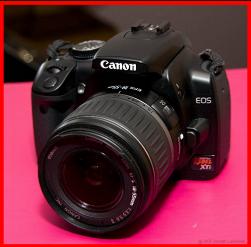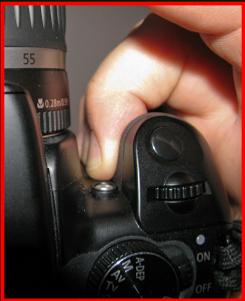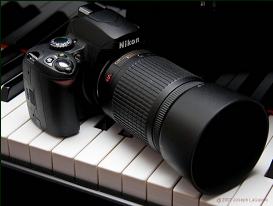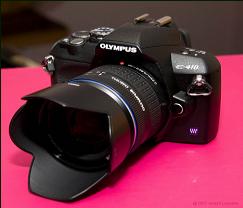A great feature that was first seen on the Minolta 5D (now Sony) is a eye sensor that automatically shuts off the rear LCD as soon as your eye is put up to the view finder. This eliminates the annoying cycling on and off of the LCD while your eye is up to the viewfinder that happens with both the Nikon and the Olympus. These cameras only turn off the LCD when you have the shutter button pressed but if you release the shutter while your eye is still on the viewfinder the LCD will turn back on.
The XTI also has exceptional low noise at all ISO settings which is up to 1600. The camera also features a sonic type of sensor cleaning where the camera shakes the sensor with ultrasonic frequency which knocks loose dust from the sensor.
What I Don't Like
Seldom is there a device that works just the way YOU would design it and the XTI is no exception, there are certainly things that I do not like about it. The first is probably the physical feel of the camera. It has a small hand grip in part necessitated by the size of the camera body but the front of the grip is not very deep making it feel rather uncomfortable in the hand and my hand is small I can only imagine that it would be significantly worse for a larger hand.
I would also like to see a larger and brighter viewfinder. Of the three cameras the XTI is about in the middle as far as the view finder. The Nikon is larger brighter and generally more pleasant to look through while the Olympus is dark and tunnel like. I also am disappointed that there is no "Auto Mode" for ISO. ISO on a DSLR becomes on of the most used variable settings and it would be nice if the camera would automatically adjust it to the lowest or highest settings based on user preference for the lowest noise or highest shutter speed as the case may be.
In use and comparing images I have concluded that the Canon metering is not as good as Nikon's and the XTI tends toward over exposure however that can easily be compensated for with the exposure compensation setting.
Conclusion
Even with my dislikes the XTI is a difficult camera to top, it is full featured, still the best sensor in the industry and compatible with all the Canon AF lenses. Canon has done a good job in putting real operational upgrades in the XTI over the previous models and there is little that is lacking. Perhaps the biggest deficiency is in the Kit lenses where I think that Nikon has the advantage. If Nikon had not crippled the D40X it would perhaps be a closer call. As I said, in the Nikon review, the image quality difference between the two cameras is very minor however I do think that in absolute terms the Image Quality Award may need to go to the Nikon; especially when considering the Kit lenses. But then again if you start to consider IQ at ISO 400 and above that would swing it back toward Canon. For me I still would place the Canon XTI as the overall best entry level DSLR all things considered. Easy to use, no confusing menus great lens options available both used and new, excellent high ISO performance and priced well below $1000.






